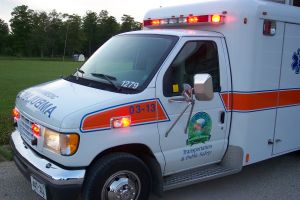Leah Bitsky ’12
Staff Writer

On Sundays night, when most Staples students are finishing up their last minute homework assignments, some are going to class from 6:00 p.m. to 10:00 p.m. to train to be a part of the Emergency Medical Services (EMS).
“It’s definitely a huge time commitment,” said Collin Carroll ’10, President of the Explorer Post (kids working at EMS).
Carroll explains that the class entails hours of studying and written assignments each week.
“We need to be able to recite 40 step practicals from memory, which is definitely the most intense part,” Carroll said. Practicals test the students on physical skills in different types of medical emergencies like trauma cases, medical cases, or even caring for a patient in shock, with blood loss, injured bones or muscles, and other situations.
“If you don’t study, there is no way anyone could pass,” Griffin Gallagher ’12, a member of the course, said.
Gallagher explains that he takes the class because he wants to be either a Cardiology Specialist or a Neurologist.
During each class, the students take a quiz at the beginning, and then usually hear a lecture from the instructor. Some nights they have practical exams and a two hour written test. Typically for these nights, the students study for most of the weekend and come in an hour early.
Although the class is challenging at times, the students still manage to have a little fun.
“Although it’s a lot of work, I enjoy the class. It’s interesting and it’s also exciting that I’ll be able to use these skills in the future,” Julia Holewinski ’12 said.
Holewinski explains that she is in the Medical Response Technician (MRT) class, which is held from September to June.
“At the end of this year I will be a certified MRT and be able to volunteer doing shifts on the ambulance,” Holewinski stated.
There are three EMT levels which are basic, intermediate, and paramedic.
Many things must be taught in order to be an EMT.
“We learn mostly basic lifesaving skills, like CPR, breathing and allergy control, splinting of injured limbs, and bleeding management,” Carroll said.
The students in the class must learn as much as possible, so they are prepared for everything- especially blood.
“The professionals teach us to remain calm, but really just do what you were trained to do. Take deep breathes, and speak carefully to any patient,” Gallagher explained on how he learns to cope with blood.
Holewinski, though not really bothered by blood, explained that there are some upsetting things the students have to be taught in class.
Carroll explains though that if you are the type of person that doesn’t really like blood, then the class may not be the right thing for you.
“Some information is sad. For example, last Sunday we were talking about Sudden Infant Death Syndrome (when an infant suddenly dies for unknown reasons.) It can really affect a person to be on a call for something like that,” Holewinski said.
However, for these stressful cases, EMTs and MRTs hold Critical Incident Stress Debriefing Sessions (CISD) as a part of Critical Incident Stress Management (CISM).
“In the real world, it’s real people you’re helping, so you have to put your fears aside, and remember that they’re depending on you for help,” Holewinski said.












































